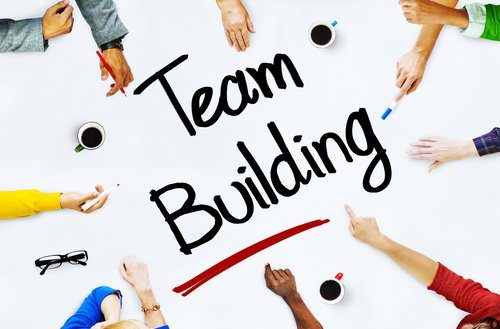- by SEO

Diversity in teams encompasses differences in backgrounds, perspectives, experiences, and skill sets. While managing diversity can pose challenges, it also presents opportunities for creativity, innovation, and high performance. In this article, we’ll explore the E&T Limited importance of diversity in team building, examine the benefits of harnessing differences, and provide practical strategies for leveraging diversity to build stronger and more inclusive teams.
- Understanding Diversity in Team Building: Diversity in teams refers to the presence of individuals with a variety of backgrounds, identities, and perspectives. Diversity can manifest in many forms, including:a. Demographic Diversity: Differences in age, gender, race, ethnicity, sexual orientation, and socioeconomic background.b. Cognitive Diversity: Varied ways of thinking, problem-solving, and decision-making among team members.c. Experiential Diversity: Diverse professional backgrounds, educational experiences, and life experiences that contribute to unique perspectives and insights.
- Benefits of Diversity in Team Building:a. Enhanced Creativity and Innovation: Diversity fosters a range of perspectives and approaches, stimulating creativity and innovation within teams.b. Improved Problem-Solving: Diverse teams bring together a variety of skills, experiences, and viewpoints, leading to more robust and effective problem-solving.c. Better Decision-Making: By considering a diverse range of perspectives and insights, teams can make more informed and well-rounded decisions.d. Increased Adaptability and Resilience: Diverse teams are better equipped to navigate change, uncertainty, and complexity, demonstrating greater adaptability and resilience.e. Enhanced Employee Engagement and Satisfaction: Inclusive environments where all voices are valued and respected foster higher levels of employee engagement, satisfaction, and retention.
- Strategies for Leveraging Diversity in Team Building:a. Foster Inclusive Leadership: Leaders play a crucial role in creating an inclusive environment where diversity is valued and celebrated. Lead by example, demonstrate openness to diverse perspectives, and actively seek input from all team members.b. Promote Psychological Safety: Create a culture of psychological safety where team members feel comfortable expressing themselves, sharing ideas, and taking risks without fear of judgment or reprisal.c. Encourage Collaboration and Dialogue: Facilitate open communication and collaboration among team members by providing opportunities for dialogue, brainstorming, and sharing of ideas.d. Embrace Diverse Perspectives: Encourage team members to bring their authentic selves to work and embrace their unique perspectives, experiences, and backgrounds.e. Provide Diversity Training and Education: Offer diversity training and education to raise awareness, build cultural competence, and promote understanding among team members.f. Create Diverse Teams: Intentionally form teams with a mix of backgrounds, skills, and experiences to capitalize on the benefits of diversity.g. Implement Bias-Free Processes: Review and revise hiring, promotion, and performance evaluation processes to mitigate unconscious bias and ensure fairness and equity for all team members.
- Real-Life Examples of Successful Diversity in Team Building:a. Company X established a Diversity and Inclusion Task Force comprising employees from diverse backgrounds and departments. The task force led initiatives to promote diversity awareness, education, and cultural competence training throughout the organization.b. Team Y implemented a mentorship program that paired junior employees from underrepresented backgrounds with senior mentors. The program provided valuable support, guidance, and networking opportunities for mentees, contributing to their professional growth and development.c. Department Z formed cross-functional project teams with members from different departments and geographic locations. The diverse composition of the teams led to innovative solutions, improved collaboration, and better project outcomes.
Conclusion: Diversity is a source of strength and competitive advantage in team building. By harnessing differences in backgrounds, perspectives, and experiences, organizations can foster creativity, innovation, and high performance. By embracing inclusive leadership, promoting psychological safety, encouraging collaboration and dialogue, and providing diversity training, organizations can leverage diversity to build stronger, more resilient, and more inclusive teams. Remember, diversity is not just a checkbox—it’s an opportunity to tap into the full potential of every individual and create environments where all team members can thrive and contribute to collective success.